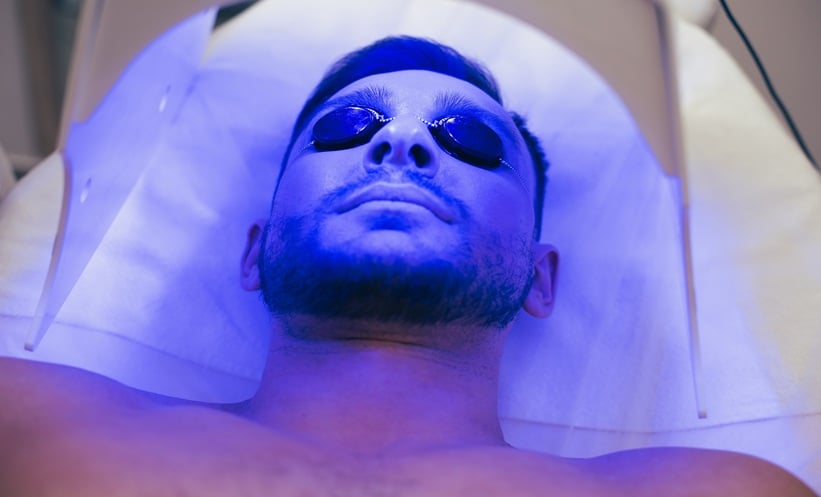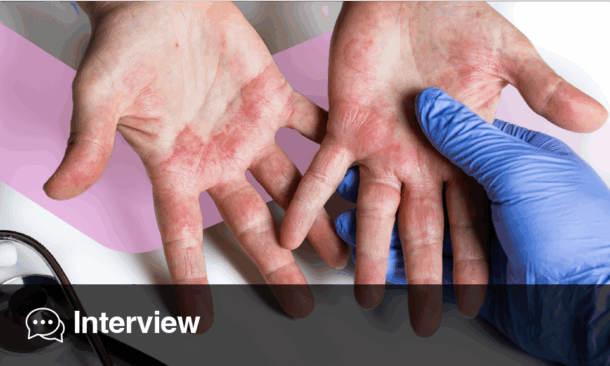Margarida Gonçalo | Senior Dermatologist and Head of the Department of Dermatology at the University Hospital of Coimbra, Portugal; Professor of Dermatology at the University of Coimbra, Portugal; Member of Executive Committee of the European Academy of Dermatology and Venereology
Citation: EMJ Dermatol. 2023;11[1] DOI/10.33590/emjdermatol/10307243. https://doi.org/10.33590/emjdermatol/10307243.
![]()
What led you to pursue a career in dermatology? Was there a specific person who, or experience that, was particularly influential?
I must admit that as a medical student, dermatology was not my main focus, even though I was acquainted with dermatology, as my mother was a Dermatologist, and I used to help her with the translation of scientific papers. After graduating as a medical doctor, I was mostly interested in Immunology and immune-mediated diseases in internal medicine. But as a researcher at the Faculty of Medicine of the University of Coimbra, Portugal, I found it difficult to do both research and a complex residency in internal medicine. Then Dermatology came as a better choice and, as I had a good qualification after the exam for choosing a specialty, I could choose dermatology.
Alongside your clinical work and research, you have a keen interest in medical education, and were recently appointed as Head of the Dermatology Department, University Hospital, Coimbra, Portugal. What inspired you to follow an academic career path?
I always liked both research and teaching, so it was natural that, after several years of clinical and basic research in immunology and dermatology, I would start an academic career. After some time, mostly dedicated to the clinical assistance of patients and clinical studies, I began more involved in basic research combining immunology and dermatology. I prepared my PhD thesis on the mechanisms of delayed immune-mediated drug eruptions. After I got my PhD degree, I proceeded with aggregation in immune-mediated chronic urticaria.
At the Department of Dermatology, where I was a Senior Consultant in Dermatology for many years, I felt I had the capacity and recognition of my fellows to apply for being the Head of the department after the previous Head retired. I wanted to try to improve the organisation of the department to accomplish a better job as a dermatological clinic in assisting patients, especially the more severe cases, and also to participate more actively in local and multicentre clinical trials and clinical research projects.
With over 365 publications to your name, which areas of dermatology research do you believe require more attention?
Mostly, I have been involved in areas related to immune-mediated skin diseases, often with multi-organ involvement, such as atopic dermatitis, chronic urticaria, adverse drug reactions, allergic contact dermatitis, and autoimmune skin diseases, like lupus erythematosus and dermatomyositis. I believe these are areas where dermatology can give an important contribution to the understanding of the pathomechanisms of skin and systemic diseases and their treatment. This is, for instance, the case of lupus erythematosus and dermatomyositis, where understanding skin disease can contribute to a correct and earlier diagnosis, therefore improving prognosis and treatment.
How successful do you believe the European Academy of Dermatology and Venereology (EADV) congresses are in providing a platform for researchers, clinicians, and industry professionals to exchange knowledge, network, and present their latest research findings?
The EADV congresses are a good setting for different purposes. For younger dermatologists, these congresses are the best place to learn from scientific presentations that can inspire them to improve their knowledge to treat patients, or begin a new career in dermatological research.
For more experienced physicians, apart from improving their scientific knowledge, EADV congresses can be a wonderful setting for networking, meeting friends, discussing scientific and other business, meeting with the international pharmaceutical industry, and getting acquainted with drugs and products that are not yet available in their own country.
What do you believe to be the primary focus of your role as Representative of the Board on the EADV Executive Committee?
The Board Representative at the Executive Committee contributes to the functioning of the Executive Committee, collaborating with their decisions, and acts as a bridge between the Executive Committee and the Board members.
You are due to chair a session on cutaneous lupus erythematosus at EADV23. What do you expect to be the key themes discussed?
We will be presenting the latest news on lupus erythematosus. We will deal with the clinical presentations of cutaneous lupus erythematosus, both the more typical and others that are less typical, but that are important in order to recognise the disease earlier, and to improve diagnosis and prognosis. We will also discuss the latest news on the disease’s pathophysiology and its cutaneous manifestations, which are very important in understanding the new treatments that, we hope, will finally be available to treat these patients efficiently and safely.
What were the main conclusions drawn in your recent publication, entitled ‘Shedding a light on the importance of photopatch testing: a 12-year experience in a dermatology unit’?
One of the areas of adverse drug reactions we have been interested in is drug photosensitivity, which can be diagnosed by photopatch testing in some cases. Therefore, it is important to have regular reviews on photopatch testing results to understand the most frequent causes of photoallergy, and to alert the doctors, the public, and authorities about the need to avoid these products, or at least be alert to the possibility of this adverse effect.
Are there any recent advances within the field of dermatology that you are particularly excited by?
The new drugs that have very specific targets, such as cytokines and cell receptors, and are changing the treatment of dermatologic disorders like chronic urticaria, psoriasis, atopic dermatitis, lupus erythematosus, chronic prurigo, hidradenitis suppurativa, and oncologic diseases. Nowadays, the exciting studies in dermatology are opening fields of research for systemic diseases that may share similar pathomechanisms, and can benefit from similar therapies, namely in rheumatology, inflammatory bowel diseases, or allergic diseases.






